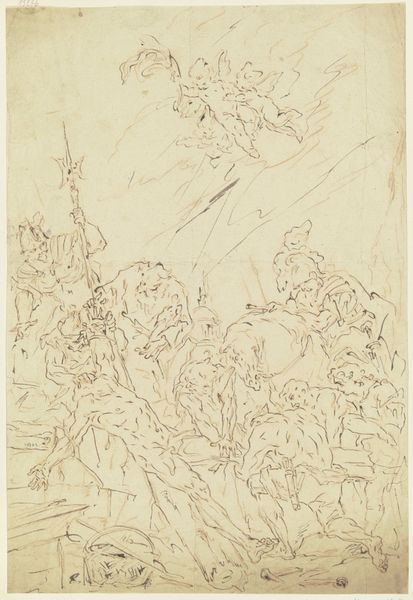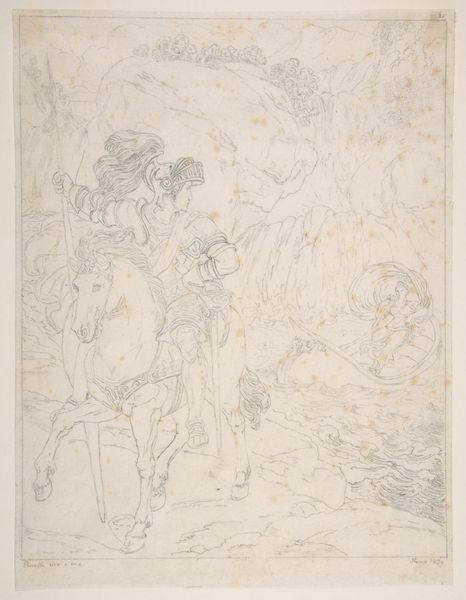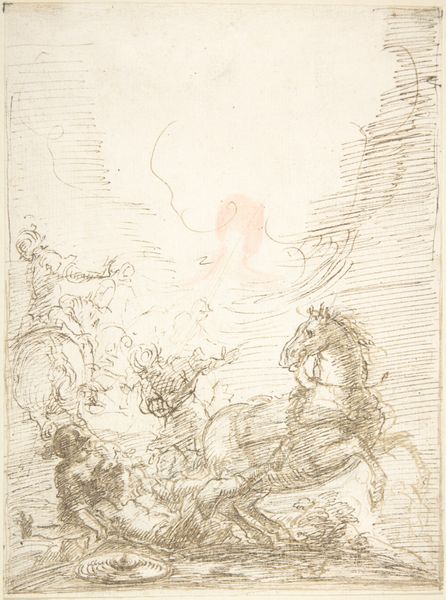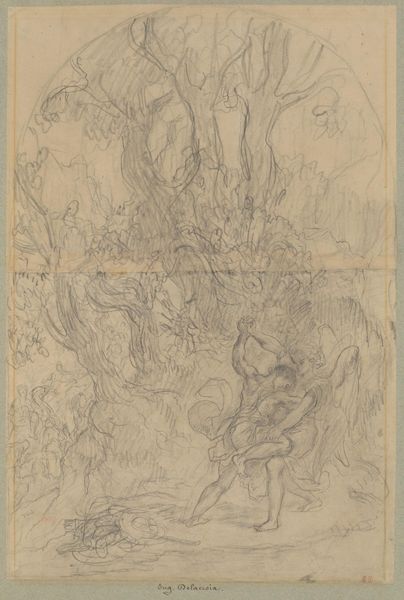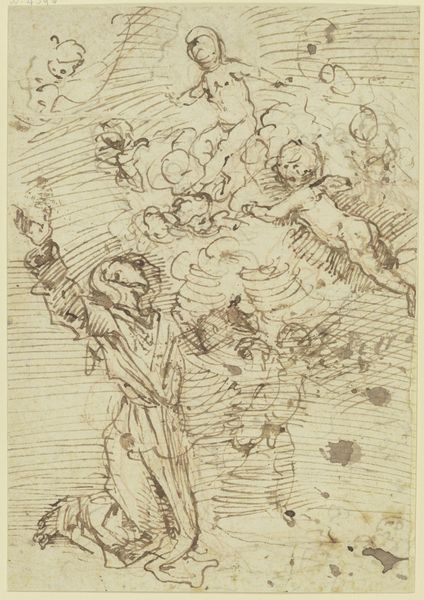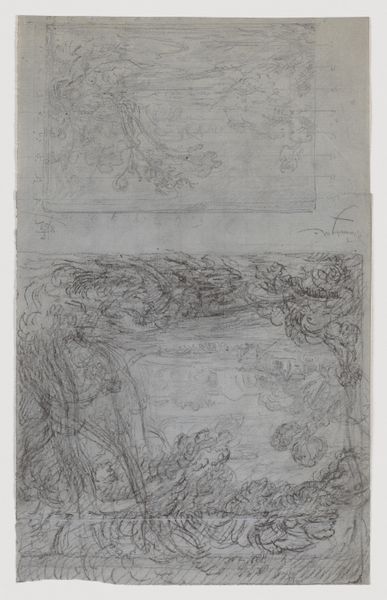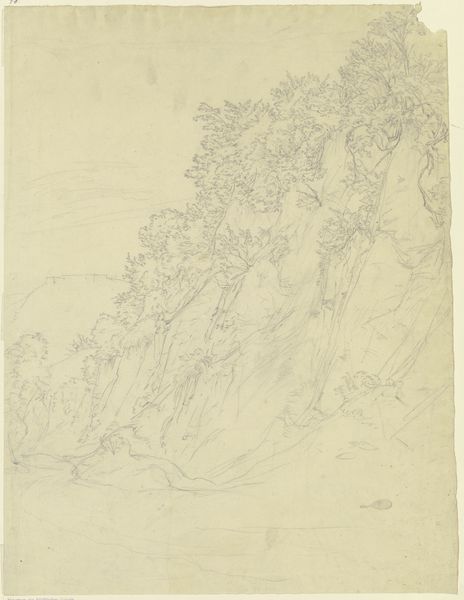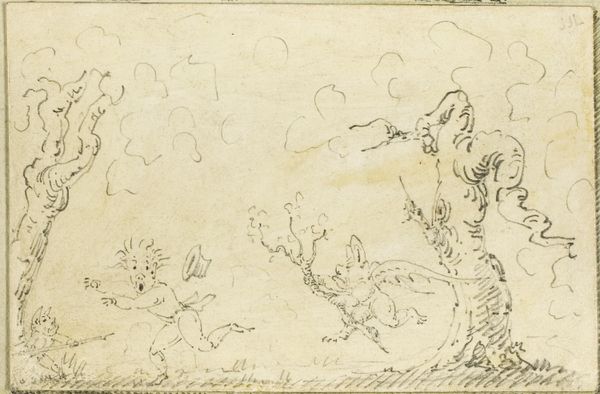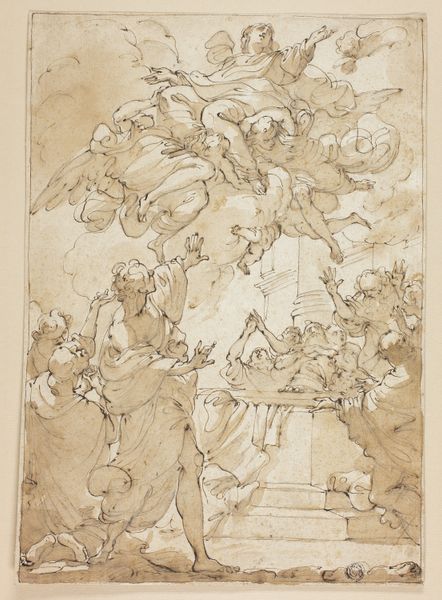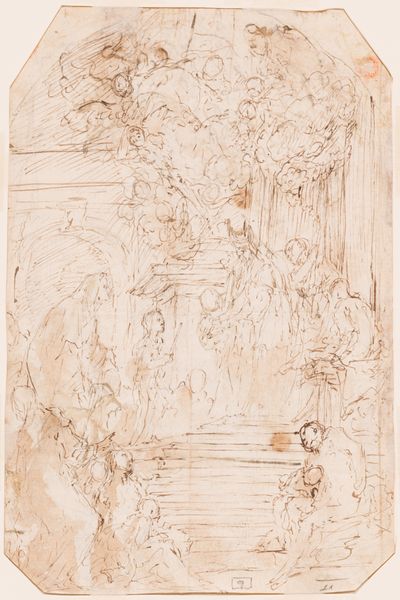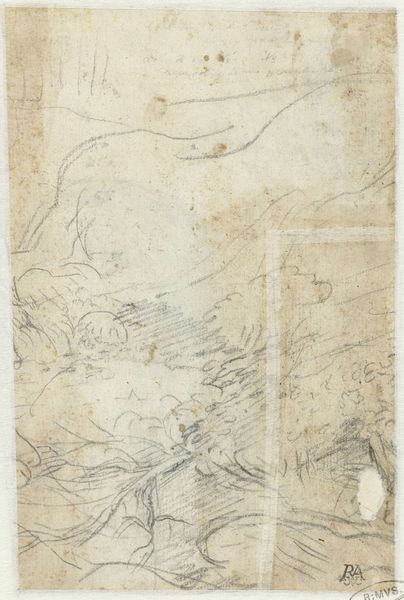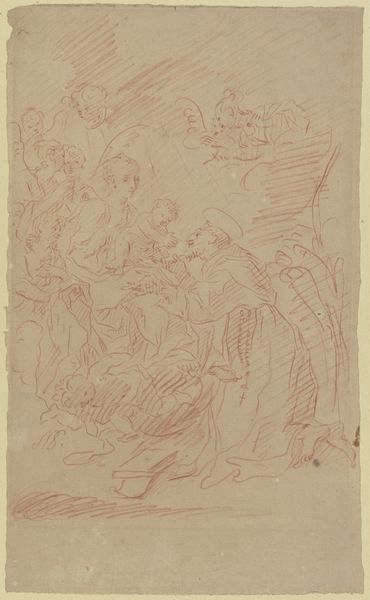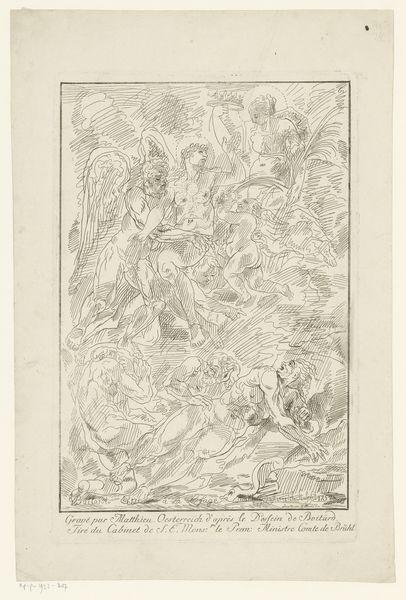
drawing, print, paper, graphite
#
drawing
# print
#
figuration
#
paper
#
line
#
graphite
#
history-painting
#
academic-art
Dimensions: 154 × 99 mm
Copyright: Public Domain
Curator: Let’s turn our attention to “Last Judgment,” a work on paper created around 1677, now part of the Art Institute of Chicago's collection. This compelling drawing and print is attributed to Johan Wirz. Editor: Gosh, it’s like looking at a hazy dream, isn't it? Sort of apocalyptic, in a sketchbook kind of way. All the figures are sketched, loose, unfinished, as if the world is still in the process of being made…or unmade! Curator: It captures the very essence of its subject matter, exploring historical themes through a lens grounded in figuration. What is quite striking, though, is the blending of line and form to engage in theological debates of the period around sin, salvation, and judgement. Editor: Absolutely! Look at the composition itself. Divine beings float in the upper register, bathed in light. Then down below, there are scenes of earthly chaos, figures emerging. And in between there's something like a turbulent, transitional space—it makes you think of human struggle. It is thought-provoking, isn’t it? Curator: Precisely. It compels the viewer to interrogate what's above and below, heaven and earth, as representative of both an internal conflict and social tensions, prompting reflection on concepts of morality within various power structures. The medium is important too: rendered in graphite, we have the line work that brings structure. The paper supports that and then this medium, "print", allows for reproducibility, for wide distribution. So it also comments, subtly, on these systems, no? Editor: That's a clever way to describe it. Now, thinking about it from a different angle... maybe Johan Wirz sketched the artwork like this as a symbolic gesture in his historical and social context, where artists perhaps feared reprisal for explicitly displaying beliefs and ideologies? Curator: I hadn't considered that specific thread, but it's important that we consider how an artist's situated context will shape how their ideas are brought forth, even coded or alluded to. Editor: Well, all things considered, a look at "Last Judgement" shows more than simply sketches. It highlights how faith, the world, and one’s life intersect to make each individual’s judgement unique, really. Curator: Indeed. With these contextual elements in mind, and the drawing's masterful lines, one sees both an artwork reflective of a specific era and a reflection of how art can function, even in fraught contexts, as social commentary.
Comments
No comments
Be the first to comment and join the conversation on the ultimate creative platform.
